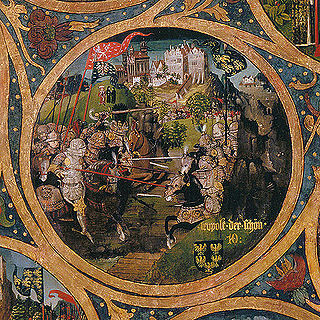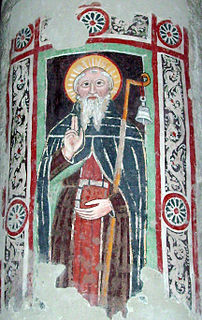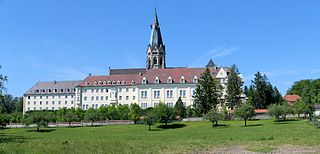External links
- (in German) Website of the Austrian Benedictines
- The Confederation of Benedictine Congregations Archived 2018-08-24 at the Wayback Machine
The Austrian Congregation is a congregation of Benedictine monasteries situated in Austria, within the Benedictine Confederation.
The Congregation was founded on 3 August 1625 by Pope Urban VIII, and consisted of eleven Benedictine monasteries in Austria:
These were however not all the Benedictine monasteries of present-day Austria. Those in the Diocese of Salzburg were formed in 1641 into the Salzburg Congregation, consisting of:
The diocese also then included two further monasteries, the locations of which are now in Bavaria in Germany:
Salzburg was secularised and became part of Austria in 1816.
Several of these abbeys ceased to exist as a result of the dissolution of monasteries enforced by Emperor Joseph II in the 1780s.
Some survived, however, and the 19th century brought a revival in the monastic movement. The two congregations were renewed by Pope Leo XIII on 23 August 1889 as the Congregations of Mary and Joseph respectively, and were combined as the present Austrian Congregation by Pope Pius XI on 8 December 1930.
The Austrian Congregation (as of 2006) consists of the following monasteries in Austria:

The Benedictines, officially the Order of Saint Benedict, are a monastic religious order of the Catholic Church following the Rule of Saint Benedict. They are also sometimes called the Black Monks, in reference to the colour of their religious habits. They were founded by Benedict of Nursia, a 6th-century monk who laid the foundations of Benedictine monasticism through the formulation of his Rule of Saint Benedict.

Melk Abbey is a Benedictine abbey above the town of Melk, Lower Austria, Austria, on a rocky outcrop overlooking the Danube river, adjoining the Wachau valley. The abbey contains the tomb of Saint Coloman of Stockerau and the remains of several members of the House of Babenberg, Austria's first ruling dynasty.

Leopold II, known as Leopold the Fair, a member of the House of Babenberg, was Margrave of Austria from 1075 until his death. A supporter of the Gregorian Reforms, he was one of the main opponents of the German king Henry IV during the Investiture Controversy.

The Olivetans, formally known as the Order of Our Lady of Mount Olivet, are a monastic order. They were founded in 1313 and recognised in 1344. They use the Rule of Saint Benedict and are a member of the Benedictine Confederation, where they are also known as the Olivetan Congregation, but are distinguished from the Benedictines in their white habit and centralized organisation. They use the post-nominals 'OSB Oliv'.

The Schottenstift, formally called Benediktinerabtei unserer Lieben Frau zu den Schotten, is a Catholic monastery founded in Vienna in 1155 when Henry II of Austria brought Irish monks to Vienna. The monks did not come directly from Ireland, but came instead from Scots Monastery in Regensburg, Germany. Since 1625, the abbey has been a member of the Austrian Congregation, now within the Benedictine Confederation.

The Schottenkirche is a parish church in Vienna attached to the Schottenstift, founded by Hiberno (Irish)-Scots Benedictine monks in the 12th century. In 1418, the Duke Albert V of Austria transferred it to the German-speaking Benedictine monks from the Melk Abbey during the Melker Reform initiated after the Council of Constance. The church was elevated to the rank of Basilica Minor in 1958.

The Hiberno-Scottish mission was a series of missions and expeditions initiated by various Irish clerics and cleric-scholars who, for the most part, are not known to have acted in concert.

Kremsmünster Abbey is a Benedictine monastery in Kremsmünster in Upper Austria.

Göttweig Abbey is a Benedictine monastery near Krems in Lower Austria. It was founded in 1083 by Altmann, Bishop of Passau.

Admont Abbey is a Benedictine monastery located on the Enns River in the town of Admont, Austria. The oldest remaining monastery in Styria, Admont Abbey contains the largest monastic library in the world as well as a long-established scientific collection. It is known for its Baroque architecture, art, and manuscripts.

St Peter's Abbey, or St Peter's Archabbey, is a Benedictine monastery and former cathedral in the Austrian city of Salzburg. It is considered one of the oldest monasteries in the German-speaking area, and in fact the oldest with a continuous history since its foundation in 696.

Seitenstetten Abbey is a Benedictine monastery in Seitenstetten in the Mostviertel region of Lower Austria.

Saint Paul's Abbey in Lavanttal is a Benedictine monastery established in 1091 near the present-day market town of Sankt Paul im Lavanttal in the Austrian state of Carinthia. The premises centered on the Romanesque monastery church were largely rebuilt in a Baroque style in the 17th century.

The Ottilien Congregation, often also known as the St. Ottilien Congregation and as the Missionary Benedictines, is a congregation of religious houses within the Benedictine Confederation, the aim of which is to combine the Benedictine way of life with activity in the mission field.

Paul Troger was an Austrian painter, draughtsman, and printmaker of the late Baroque period. Troger's illusionistic ceiling paintings in fresco are notable for their dramatic vitality of movement and their palette of light colors.

Johann Jakob Zeiller was an Austrian painter.

The Wachau is an Austrian valley with a picturesque landscape formed by the Danube river. It is one of the most prominent tourist destinations of Lower Austria, located midway between the towns of Melk and Krems that also attracts "connoisseurs and epicureans" for its high-quality wines. It is 36 kilometres (22 mi) in length and was already settled in prehistoric times. A well-known place and tourist attraction is Dürnstein, where King Richard the Lionheart of England was held captive by Duke Leopold V of Austria and Styria. The architectural elegance of its ancient monasteries, castles and ruins combined with the urban architecture of its towns and villages, and the cultivation of vines as an important agricultural produce are the dominant features of the valley.

Altmann was the Bishop of Passau from 1065 until his death. He was an important representative of the Gregorian reforms, monastic founder and reformer. He is venerated as a saint, but not officially canonised.